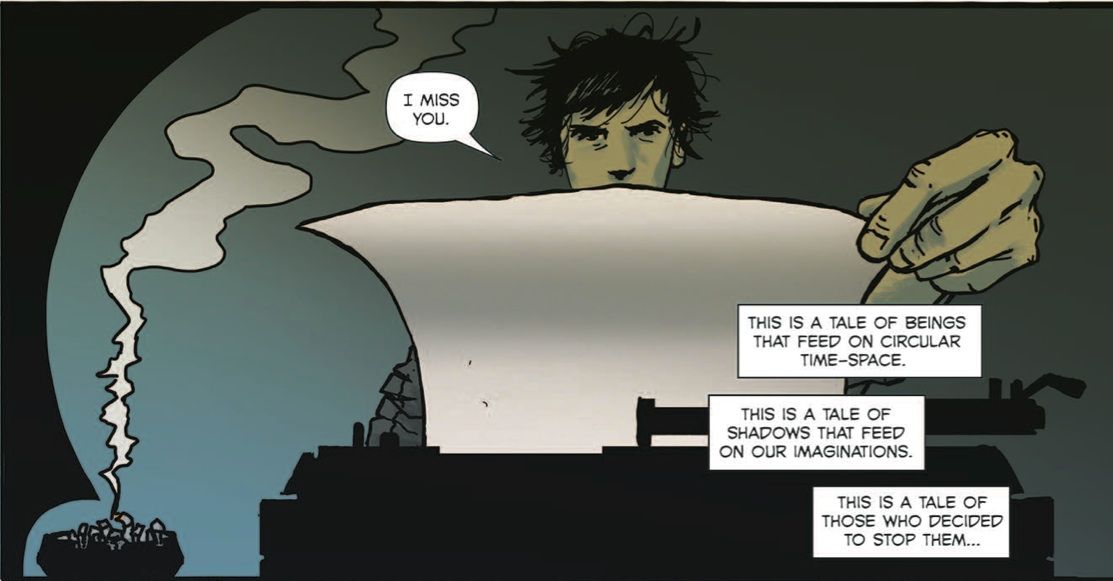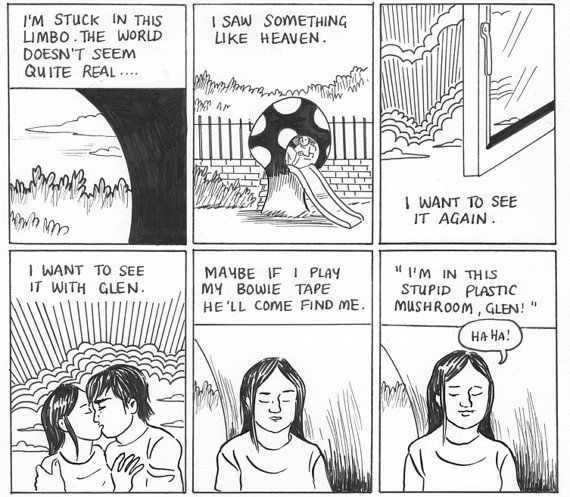The Open
Though it may ruin all credibility, I read few comics this year. Took a break; did some drinking; blew off the culture all together. It was a nice change of pace. Life prior revolved around it (sad, I know). Now, it doesn’t, and the world seems a bit bigger. Or at least smudgy, tangled and more alive than I knew.
That said, I’m still reading this stuff, and though it were a short stack this year, quite a few items deserve a moment’s reflection, so here we deliver it: a Top 10.
Thanks for reading.
The Feature
10. Batman INC. | Grant Morrison, Chris Burnham | DC Comics
Grant Morrison’s historic run ended the way we expected, yet to have it placed finally in front of us as a set occurrence, that last curtain felt all the more final. For the faithful, Morrison’s Batman meant more than a plot of twists and turns – it crossed time. You can pin life events next to issue release dates, and while the grand-stand manipulations of Morrison’s story didn’t last, they still hold a spot in memory. Which is enough. Because that was the fun of it. Not the end game.
9. Training | Josh Simmons | Oily Comics
Movement dominates this piece. Whether it’s the protagonist’s struggle to rise from the ground, or the amount of panel space dedicated to running, jumping and kicking, Training works to move a reader’s eye from the get-go. It wastes not a second, taking even 2/3’s of the cover to tell story rather than position a decadent logo or pinup. This is Josh Simmons as not a gross-out gag heathen; this is a cartoonist chasing efficiency.
8. Lose #5 | Michael DeForge | Koyama Press
Michael DeForge is awesome.
7. Pompeii | Frank Santoro | PictureBox
Frank Miller has this quote in The Men Without Fear: The Making of Daredevil documentary that says more of Pompeii, the latest Frank Santoro release, than any published review. “A cartoonist has to be really smart to slow you down. A filmmaker just has to leave the camera where it is for a long time.” Pompeii, aware of this, whips a reader through a maze of altered pacing, finding ways through line, composition and texture to either move a reader ahead or hold them in their tracks. It’s a potent, little love story made all the more tangible by the subtlety of timing.
6. Life Zone | Simon Hanselmann | Space Face Books
There’s something so accessible about Simon Hanselmann’s work even though brought to light through the tangle of the Tumblr comics scene, and Life Zone, Hanselmann’s 64-page debut at Comic Arts Brooklyn, manages to further straddle that line laid between obscure and mass appeal. Megg, Mogg, Owl and Werewolf Jones all transmit exact signals as characters, and Hanselmann’s direction sends them through charmingly odd tales so tight, funny and well-paced, it’s an easy flow even when the moments are grim.
5. Backyard | Sam Alden |Sonatina Comics
Backyard shows Sam Alden, a rather young cartoonist, as an already conscious storyteller not only concerned of plot or theme but the role of perspective in narrative. We see a cast of characters one way while we know they view things differently. It’s that “narrative of the reader’s perception” Alden finds so compelling, and it’s beautifully conveyed through a string of immediate black lines smudged over white paper, just to nail down the contrast.
4. COPRA | Michel Fiffe | Self-published
It’s all a wonderful homage to not only a genre but a way of cartooning. Written, drawn, colored, lettered and distributed all on Michel Fiffe’s watch, this book lived by the monthly deadline just like any other American super hero/action comic, but what made it so different was the vicious bleed backing it. You felt every punch - every knock and tumble. The vibrancy of Fiffe’s colors and line art made it clear, but the ever-present knowledge of the cartoonist hunched over his drawing board, scars and all defying the clock, really left a mark.
3. Internet Comics | Mare Odomo | Sacred Prism
Mare Odomo’s poetry slips between images, phrases and narrators like the thoughts of some ADHD-infected Internet fiend, yet makes not this struggle of attention a dark, cynical observation but instead a thing of wonder. A beautiful debut from Sacred Prism, Internet Comics leans on floating, dream weaving momentum to encapsulate images, smells and memories, and it does so freely, saying more in 12 pages than most anything else.
2. Change | Ales Kot, Morgan Jeske| Image Comics
Change shrinks you, yet its density and hyper-ness link you to something larger, simultaneously. It’s a tough work to pinpoint because while reading, even though laid to paper, it appears to morph, unfiltered, but there’s something of artist Morgan Jeske’s adherence to the script – his attention to clearly portraying this abstract thing – that helps us hold onto something so rapid. It feels like there’s a chance at happiness.
1. The Sky in Stereo #2 | Mardou | Yam Books
originally written for Zainab Akhtar, published here.
It’s no surprise that works like this or Chuck Forsman’s The End of the Fucking World do so much for me because as a torn, desperate 21-year-old I’m indefinitely the target, if not subject of them. But aside from gut attachment, what makes Mardou’s comic so rich is her dedication to concise, clear narrative. In a sea of abstract, poetic alternative work and overblown corporate mega-series, it’s easy to forget how sweet conscious storytelling is, and remembering so takes us back to the cornerstones of why we gander at this shit at all.
Admittedly, most plot-driven exercises bore me to tears now, but Stereo grounds me in those cornerstones again because there’s a well-considered focal point to carry me through the story beats – Iris, the comic’s lead character. She’s an archetype like anything else, yet Mardou spices her up by relaying such personality through the title’s use of point of view. Iris takes us through her days herself, and those rectangular caption boxes allow any reader to know the character’s sense of place, potential and disposition.
“I’m not going to college today. / I’m totally going to call him!”
They’re simple thoughts, but the command she has of them says she’s alive, and they show a being with wants and ability rather than some cardboard cut-out to bounce themes off of. There’s a chance to really latch onto something here that’s more kinetic than pacing, tone or style. Iris is an extension of us, per say, and the conversation this makes goes beyond anything tactical. It goes to our investigation, excitement and dread of the world around us.
And with her images always serving the beats, Mardou has this book locked on composition. The lines packed with subtle inconsistencies, you know the textures, but beyond her bare line a style doesn’t exist. Which is just fine. We’re not here for that.
We came to see something else.
The Exit
2014, you better be awesome.
Alec Berry plagiarized this column. Follow him on Twitter @Alec_Berry.


